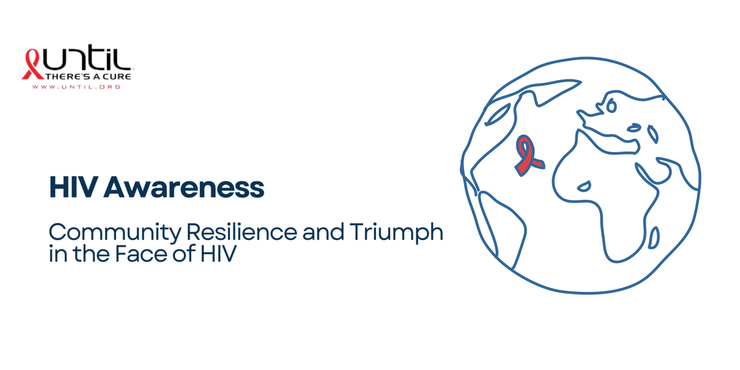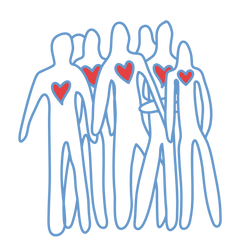|
The global challenge of HIV/AIDS, profoundly impacting millions, extends beyond medical concerns, representing a test of community strength and resilience in the HIV community. From the early days marked by fear and uncertainty to a period characterized by hope and progress, the fight against HIV/AIDS has evolved into a narrative of significant triumphs. This journey exemplifies the human spirit's ability to surmount overwhelming adversities. Through grassroots efforts, education, and medical advancements, including the pursuit of an HIV vaccine, communities globally have united in the fight against HIV/AIDS, underscoring the critical role of HIV awareness. It reflects on the importance of HIV awareness days and campaigns in educating about HIV symptoms in women, the meaning of HIV positive, and the broader implications of the virus. By raising HIV awareness, we contribute to a more informed and responsive society, capable of supporting people living with HIV and advancing toward an era without HIV. The Early Days of HIV/AIDSInitial Global Response During the early 1980s, the rise of HIV/AIDS as a global health crisis sparked widespread fear and confusion. The initial response, marked by apprehension and urgency, was marred by misinformation, stigma, and insufficient HIV awareness. By 2022, global new HIV infections had dropped to an estimated 1.3 million, a substantial decline from the 1995 peak of 3.2 million, indicating a 59% decrease from the peak and a 38% reduction since 2010. Community's Role in HIV AwarenessGrassroots Initiatives Communities, often the first responders to the HIV/AIDS crisis, have been crucial in HIV awareness and support. Local initiatives, such as neighborhood health workshops and peer education programs, have effectively disseminated knowledge about HIV, including symptoms and prevention. These grassroots efforts, especially significant in the black community and among women, have played an instrumental role in educating about HIV transmission and reducing stigma, empowering people living with HIV and those affected by the epidemic. Local Leadership Local leadership has been crucial in combating HIV/AIDS. Community leaders, many of whom are survivors or closely linked to affected individuals, spearheaded campaigns for safe practices, healthcare access, and destigmatization. Their genuine experiences and voices have added authenticity and urgency, inspiring wider participation in the cause. Building Resilient Communities Grassroots movements, central to HIV awareness, have educated and empowered communities to advocate for their rights and healthcare needs. They've fostered resilience, enabling tailored responses to the HIV/AIDS epidemic. This empowerment has been pivotal in shaping HIV policies, improving access to HIV treatment and clinics, and ensuring the needs of those living with HIV/AIDS are met with respect and dignity. Tackling Stigma and DiscriminationThe Stigma Around HIV HIV/AIDS, often enveloped in stigma, presents a barrier as formidable as the virus itself. This stigma, fueled by misconceptions and fear, has led to widespread discrimination, notably hindering effective HIV awareness and responses. Strategies for Overcoming Stigma Communities and activists have combated stigma through education and open dialogue. By sharing accurate information and personal stories, they've challenged myths, fostering a more inclusive and understanding environment for those living with HIV. Stories of Resilience Personal narratives of those affected by HIV/AIDS have been powerful in breaking down stigma. These stories, highlighting resilience and hope, have shifted public perception, promoting empathy and support for those battling the virus. Advances in Medical TreatmentProgress in HIV Treatment Significant advancements in HIV treatment, particularly effective antiretroviral therapies, have revolutionized the prognosis from a fatal diagnosis to a manageable condition. By the end of 2022, 29.8 million people with HIV (76% [65–89%] of all people living with HIV) were accessing antiretroviral therapy (ART) globally, a substantial increase from 7.7 million in 2010. These treatments have notably enhanced life expectancy and quality for those living with HIV, contributing to global HIV response and prevention efforts. Importance of Accessible Healthcare Accessible healthcare is vital in this progress. Ensuring that everyone, regardless of background or location, can access these life-saving treatments is crucial for controlling and eventually eradicating HIV/AIDS globally. Personal Triumphs: Stories of Hope from People Living with HIVInspirational Individual and Community Stories Countless individuals and communities have turned their HIV battles into inspiring tales of hope. Their journeys of resilience and courage offer profound insights into the human spirit's strength. Importance of Support Networks These stories often highlight the crucial role of support networks. Family, friends, and community groups provide essential emotional and practical support, playing a key role in the journey towards health and acceptance. Sustaining Community EffortsOngoing Need for Awareness and Support The fight against HIV/AIDS, a crucial global health challenge, continues. Persistent efforts in HIV and AIDS awareness, along with providing support, are vital to sustain the advancements achieved and to assist those impacted by the virus. Despite progress, around 630,000 people died from AIDS-related illnesses worldwide in 2022, nearly 98,000 adolescent girls were infected with HIV in 2022 alone. 71% of new infections are among adolescents ages 10 to 19, highlighting the ongoing need for awareness and support. Future Challenges and Opportunities In the future, the challenge lies in harmonizing new medical advancements, like effective HIV treatment and potential vaccines, with community-driven efforts. This presents an opportunity to utilize advancements in HIV medicines and technology for broader outreach, fostering global HIV response and developing inclusive health policies that cater to everyone affected by HIV/AIDS, including those living with HIV and populations at higher risk like the black community and women. ConclusionIn this crucial phase of our united battle against HIV/AIDS, the role of ongoing HIV awareness is fundamental. It forms the bedrock of our achievements and paves the way for future victories. As we advance, we must uphold the beacon of HIV awareness, shedding light on the path for others and dismantling the barriers of ignorance and apprehension. Your proactive participation in this endeavor is not merely valuable; it is indispensable. Together, by expanding knowledge and fostering understanding, we create a solid alliance against HIV/AIDS. Join us in this vital journey: actively engage in raising HIV awareness and support those affected. Together, we can change the course of HIV/AIDS and shape a healthier future for all. Get involved now and contribute to this vital change. FAQsWhat role does community play in HIV awareness?
Communities are vital in spreading HIV knowledge and empowering affected individuals through local initiatives and education programs. How have medical advancements impacted HIV/AIDS treatment? Medical advancements, especially antiretroviral therapies, have transformed HIV into a manageable condition, improving life expectancy for those affected. What challenges are associated with HIV/AIDS stigma? HIV/AIDS stigma leads to discrimination and misinformation, which can be overcome through education, dialogue, and sharing personal stories. Why is sustaining HIV awareness efforts important? Sustaining HIV awareness is crucial for maintaining progress, supporting affected individuals, and integrating medical advancements with community efforts.
1 Comment
|
|
Until There's A Cure © 2024
© COPYRIGHT 2024. ALL RIGHTS RESERVED |
501(c)3
EIN # 94-3181306 |




